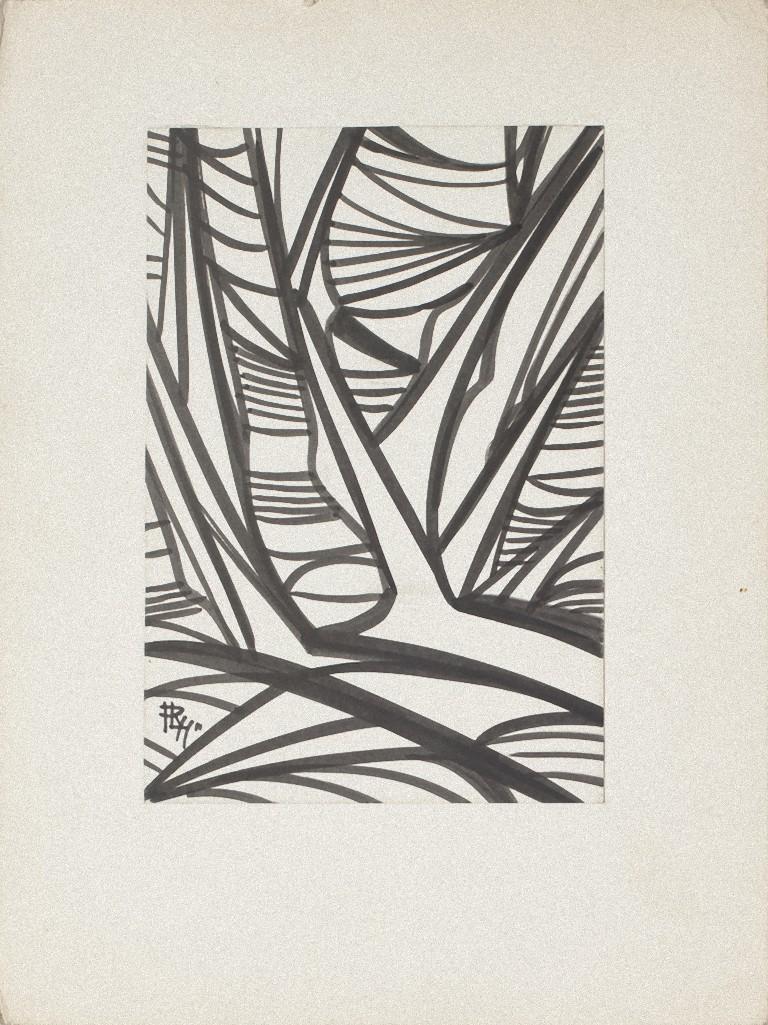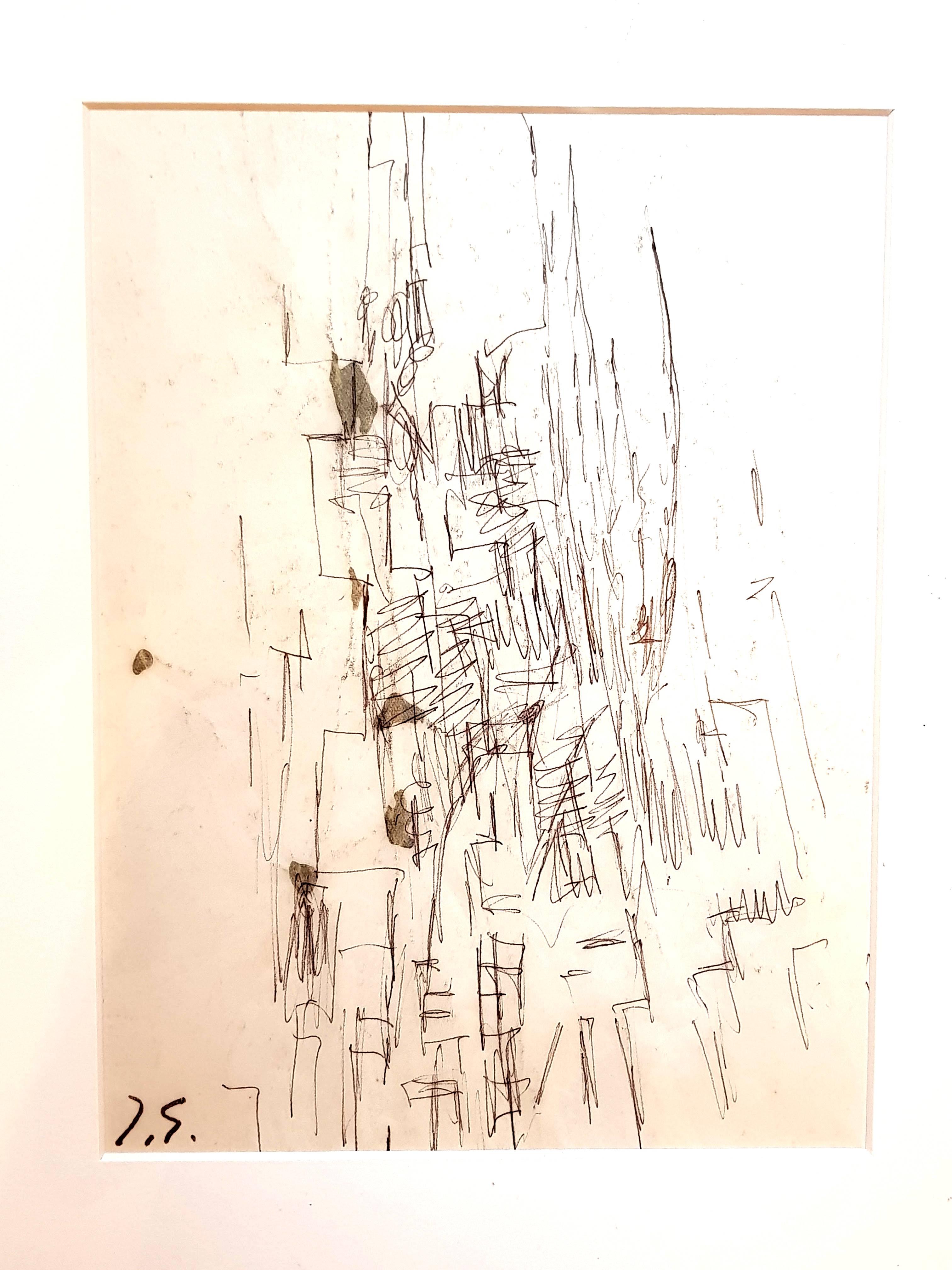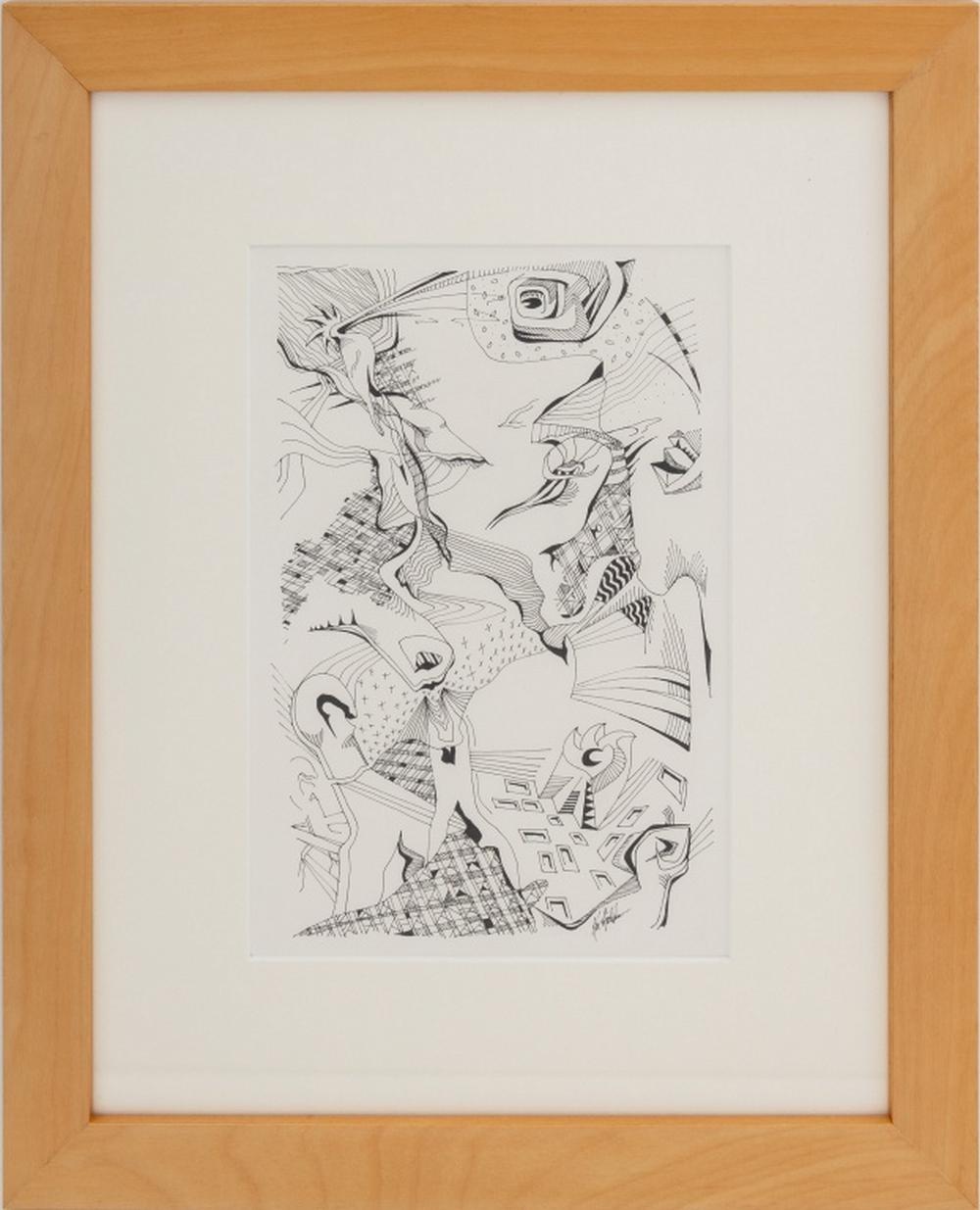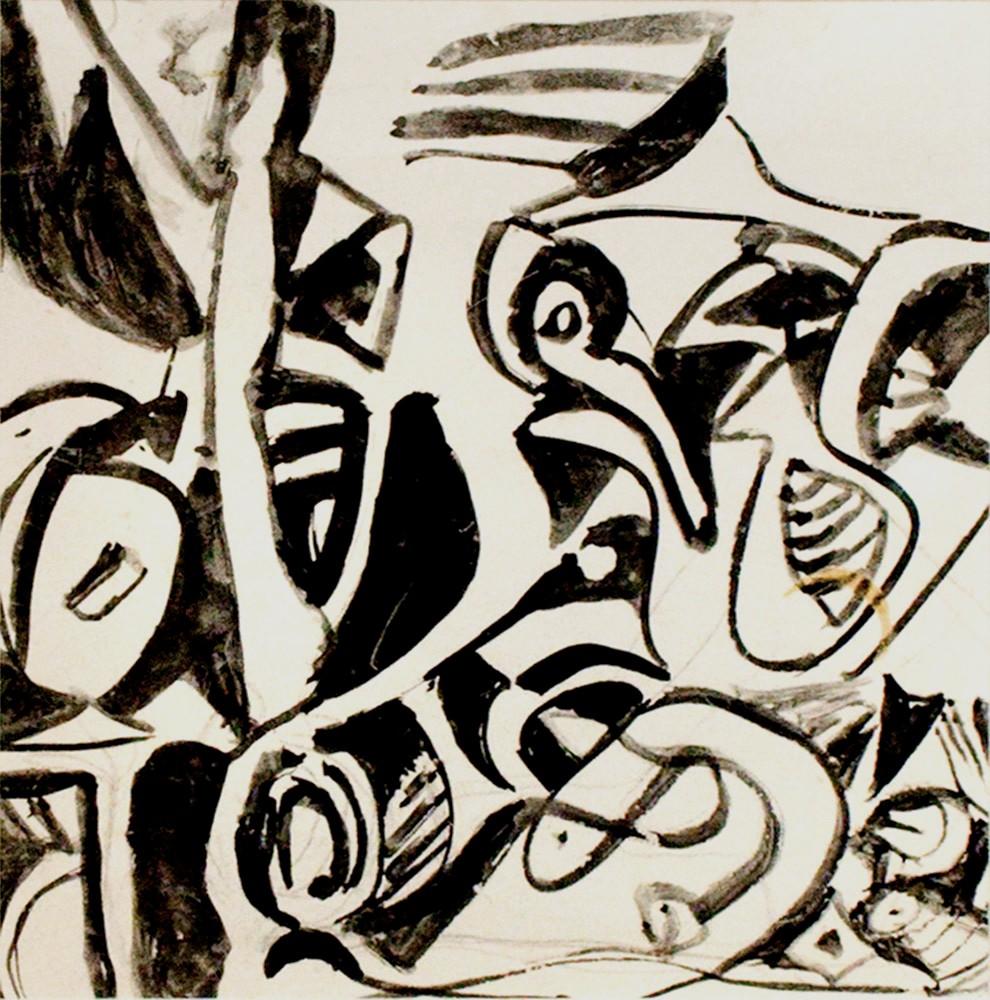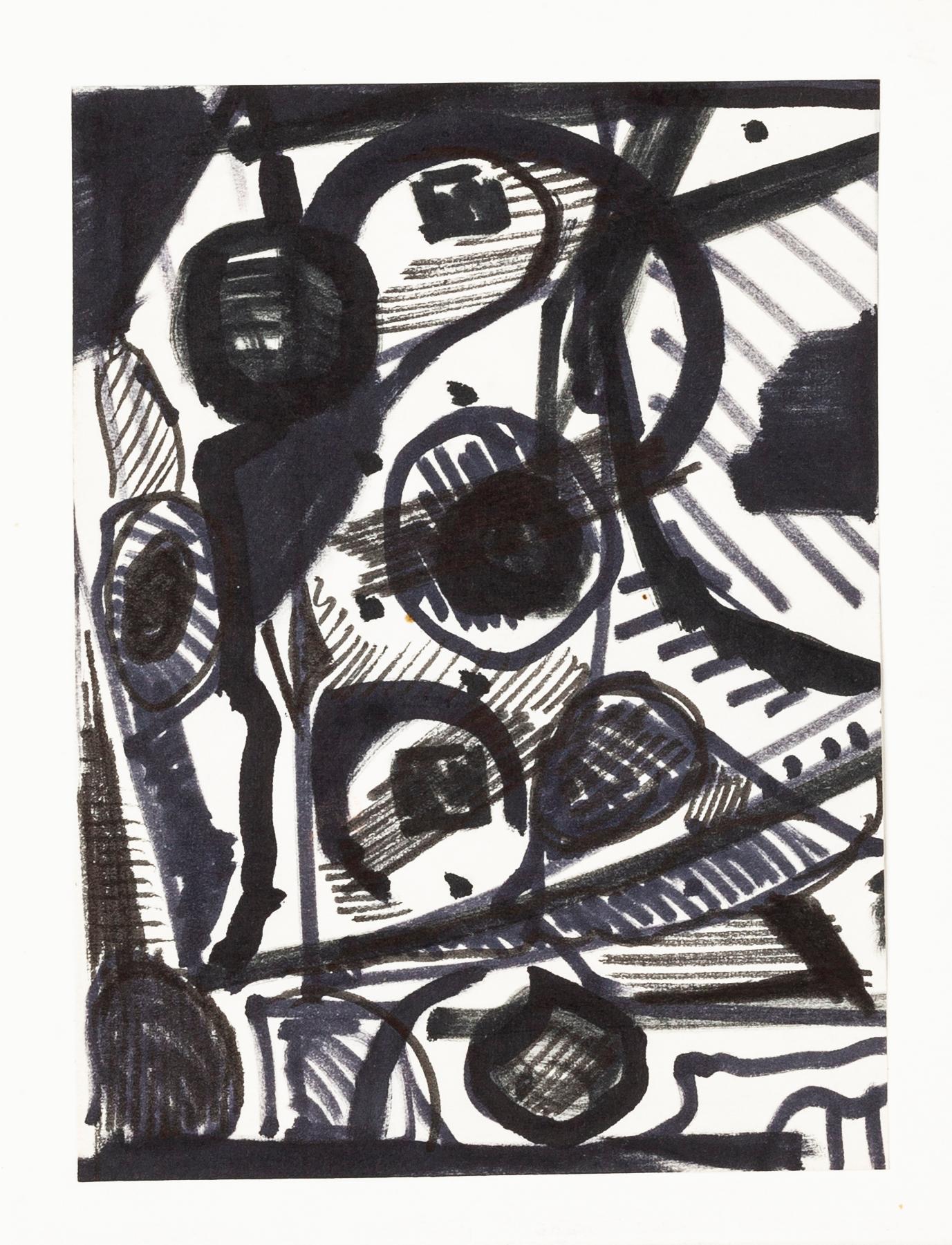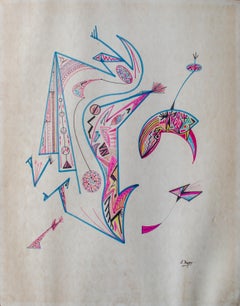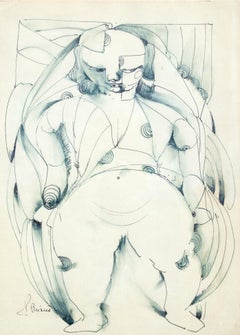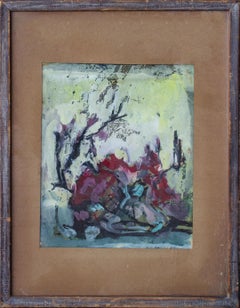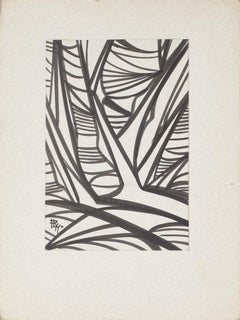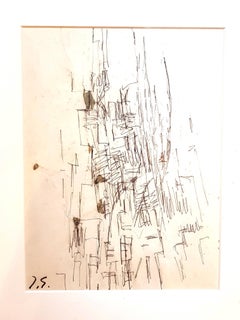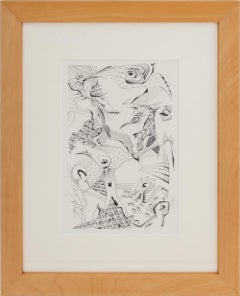Items Similar to 1960s Illegibly signed surrealist ink drawing
Want more images or videos?
Request additional images or videos from the seller
1 of 8
Unknown1960s Illegibly signed surrealist ink drawingc. 1960s
c. 1960s
$595
£451.53
€517.04
CA$845.54
A$920.26
CHF 483.13
MX$11,118.13
NOK 6,063.82
SEK 5,717.46
DKK 3,859.63
About the Item
Unknown Artist
Untitled, c. 1960s
Ink on paper
Sight size: 10 x 7 in.
Framed: 15 1/4 x 12 1/4 in.
Signed illegibly lower right: Jack Bl...?
- Creation Year:c. 1960s
- Dimensions:Height: 15.25 in (38.74 cm)Width: 12.25 in (31.12 cm)Depth: 1 in (2.54 cm)
- Medium:
- Movement & Style:
- Period:
- Condition:
- Gallery Location:New York, NY
- Reference Number:1stDibs: LU2211211591652
About the Seller
5.0
Platinum Seller
Premium sellers with a 4.7+ rating and 24-hour response times
1stDibs seller since 2022
94 sales on 1stDibs
Typical response time: 1 hour
- ShippingRetrieving quote...Shipping from: New York, NY
- Return Policy
Authenticity Guarantee
In the unlikely event there’s an issue with an item’s authenticity, contact us within 1 year for a full refund. DetailsMoney-Back Guarantee
If your item is not as described, is damaged in transit, or does not arrive, contact us within 7 days for a full refund. Details24-Hour Cancellation
You have a 24-hour grace period in which to reconsider your purchase, with no questions asked.Vetted Professional Sellers
Our world-class sellers must adhere to strict standards for service and quality, maintaining the integrity of our listings.Price-Match Guarantee
If you find that a seller listed the same item for a lower price elsewhere, we’ll match it.Trusted Global Delivery
Our best-in-class carrier network provides specialized shipping options worldwide, including custom delivery.More From This Seller
View AllTribal Marker Drawing by Seymour Meyer
Located in New York, NY
Seymour Meyer (American, 1914-2009)
Untitled, c. 21st Century
Permanent marker on paper
28 x 22 in.
Signed: S. Myer
A hand surgeon who broke into the arts later in life, Seymour Mey...
Category
21st Century and Contemporary Contemporary Animal Drawings and Watercolors
Materials
Paper, Permanent Marker
Cubist Line Drawing of a Figure by Mystery Artist
Located in New York, NY
Mystery Artist
Untitled, 20th century
Ink on paper
Sight: 12 x 8 5/8 in.
Framed: 17 1/8 x 13 1/8 x 1 1/2 in.
Signed lower left
Category
20th Century Cubist Portrait Drawings and Watercolors
Materials
Paper, Ink
Todd Siler Original Surrealist Drawing
By Todd Siler
Located in New York, NY
Todd Siler (American, b. 1953)
Untitled, c. Late 20th Century
Pen/ink on paper
Framed: 32 3/4 x 24 in.
Signed verso
The following, submitted August 2005, is from the artist.
The Am...
Category
Late 20th Century Contemporary Figurative Drawings and Watercolors
Materials
Paper, Pen
Samson Schames Abstract Work on Paper, 1960
By Samson Schames
Located in New York, NY
Samson Schames (German-American, 1898-1967)
Untitled, 1960
Mixed media on paper
Sight: 16 1/2 x 14 in.
Framed: 27 1/2 z 22 1/2 x 1/2 in.
Signed and dated lower right
Samson Schames ...
Category
1960s Modern Abstract Paintings
Materials
Mixed Media
Colorful 1970s Abstraction, Signed "Soyer" Illegibly
Located in New York, NY
Sloyer
Untitled, 1976
Oil on canvas
36 1/4 x 24 x 1 3/8 in.
Artist label verso (text slightly obscured)
Signed on stretcher bar
Category
1970s Abstract Abstract Paintings
Materials
Canvas, Oil
Leonard Baskin Abstract Woodcut, Signed
By Leonard Baskin
Located in New York, NY
Leonard Baskin (1922-2000)
Untitled, Late 20th Century
Woodcut
Framed: 32 x 24 1/4 x 1/4 in.
Edition 26/50
Signed and numbered lower right
A highly respected draftsman, printmaker, ...
Category
Late 20th Century Abstract Abstract Prints
Materials
Woodcut
You May Also Like
Composition - Original Ink on Paper - Mid-20th Century
Located in Roma, IT
Composition is an original drawing in marking china ink on paper realized by an unknown artist of the 20th Century.
Monogrammed" A.R.H" on the lower left, with sign and title on th...
Category
Mid-20th Century Contemporary Abstract Drawings and Watercolors
Materials
Paper, Ink
Landscape - Original Ink on Paper - 20th Century
Located in Roma, IT
Landscape is an original drawing in ink on paper applied on cardboard realized by an Anonymous artist of the XX century.
The State of preservation is very good with some stain alon...
Category
1830s Figurative Drawings and Watercolors
Materials
Ink
Jacques Germain -Untitled - Original Signed Drawing
By Jacques Germain
Located in Collonge Bellerive, Geneve, CH
Jacques GERMAIN (1915-2001)
Untitled
Circa 1970
Dimensions: 25 x 18 cm
Pencil on Paper
Signed J.G
Born in Paris in 1915, worked with Fernand Léger and Amédée Ozenfant at the Acad...
Category
1970s Abstract Expressionist Abstract Drawings and Watercolors
Materials
Ink
Contemporary School Surrealist Composition Ink
Located in Astoria, NY
Contemporary School, Surrealist Composition, Ink on Paper, illegibly signed "Ken ....?" lower right, wood frame. Image: 9.5" H x 6.25" W; frame: 16" H x 13" W. Provenance: From a Cen...
Category
21st Century and Contemporary Surrealist Abstract Drawings and Watercolors
Materials
Paper, Ink
Ca. 1950, Black & White Ink Abstraction by Notable Artist Jan Matulka
By Jan Matulka
Located in Chicago, IL
A handsome ca. 1950 black & white Abstraction by important Modernist artist Jan Matulka. Image size:
6" x 6 1/2". Framed size: 12 3/4" x 12 3/4".
Born in Prague, Czechoslovakia...
Category
1950s American Modern Abstract Drawings and Watercolors
Materials
Ink, Graphite
Abstract Composition - Lithograph by J. Mailhe - 1967
Located in Roma, IT
Abstract is an original lithograph on paper by Jean Mailhe (born1912), realized in 1967 as cover for the invitation to Mailhe's vernissage organized by "L'...
Category
1960s Abstract Abstract Prints
Materials
Lithograph
More Ways To Browse
Framed Ink Drawing
Illegibly Signed
1960s Abstract Painting Framed
Illegible Painting
Painting Illegibly Signed
Abstract Floral Watercolor
Used Sea Pen
Original Abstract Pencil Drawings
Ink Drawings Large
Joseph Campbell
Triptych Drawings
Italian Love Art
Shell Watercolor
21st Century Watercolour Artists
Black Ink Minimalist Drawings
Shanthi Chandrasekar
Valente Painting
Beaver Painting
